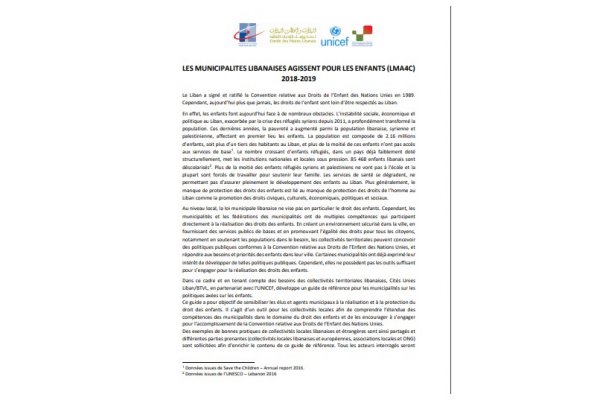Lebanon signed and ratified the United Nations Convention on the Rights of the Child (UNCRC) in 1989. However, now
more than ever, children’s rights are far from being respected in Lebanon.
Today, children growing up in Lebanon are facing multiples challenges. The
instable social, economic and political context in Lebanon, exacerbated by the
Syrian crisis since 2011, has deeply harmed the population. In the last few
years, poverty has increased in the Lebanese and refugee community, affecting
primarily the children. The population is composed of 2.16 million children,
representing more than a third of the population, and more than half of them
are in need for basic services.
The increased of refugee child, in an already weakly developed country in terms
of basic services, puts the national and local institutions under pressure. 85
468 of primary school-aged Lebanese children are out of school. More than half of the Palestinian and Syrian refugee children don’t go to
school and most of them are forced to work to support their family. The health
services keep degrading, jeopardizing the full development of children in
Lebanon. More generally, the lack of protection of child rights is linked to
the lack of protection of basic human rights in Lebanon like the promotion of
equal participation and equal opportunities in the exercise of civil, cultural,
economic, political and social rights.
At the local level, the Lebanese local authorities’ law does not especially target the children’s rights. However, municipalities and federation of municipalities have multiples competencies that directly participate to the realization of children’s rights at the local level. By creating a safe environment in the city, delivering basic public services and promoting equal rights for every citizen, support the most in need population, local authorities can conceive public policies that comply with the UNCRC and answer needs and priorities for children in their city. Some municipalities have already expressed their interest in developing such public policies, but they lack the tools to engage toward achievement of child rights.







